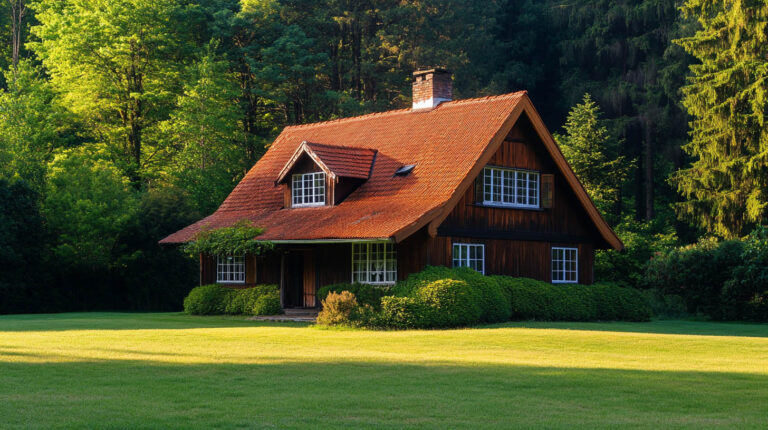
Blog
Why Proper Roofing Ventilation is Crucial for Your Home
Ensuring your roof has proper ventilation is essential to maintaining a healthy and long-lasting roof. At Avenue Roofing, serving Jacksonville, FL, we specialize in providing ventilation systems that keep your roof in optimal condition while protecting your home from moisture, heat buildup, and structural damage. Understanding the importance of roof ventilation can help you avoid costly repairs and extend the life of your roof.

How Roof Ventilation Benefits Your Home
Roof ventilation works by allowing cool, dry air to enter your attic while warm, moist air escapes, creating a balanced airflow. This “breathability” prevents various roofing issues, such as water damage, mold growth, and even shingle deterioration. Proper ventilation also contributes to your home’s overall energy efficiency, lowering utility bills throughout the year.
Extends Roof Lifespan
Proper ventilation reduces heat and moisture buildup in your attic, which can otherwise cause your roofing materials to degrade faster. By maintaining a cool and dry attic, you can significantly increase the lifespan of your roof.
Fact: Studies show that inadequate ventilation can reduce a roof’s lifespan by as much as 30%, especially in climates prone to extreme temperatures.
Prevents Water Damage and Mold Growth
Without proper ventilation, moisture can accumulate in your attic, leading to water damage, wood rot, and mold. Mold not only damages your home but can also pose serious health risks. A well-ventilated attic allows moisture to escape, preventing these issues before they become serious.
Helps Maintain Energy Efficiency
Roof ventilation plays a critical role in regulating the temperature of your home. During the summer, heat can become trapped in the attic, forcing your air conditioning system to work harder. In winter, poor ventilation can lead to ice dams and uneven insulation. By improving attic airflow, you can maintain a more consistent temperature and reduce energy consumption.
Protects Insulation
Moisture buildup in the attic can cause insulation to lose its effectiveness. When insulation becomes damp, it clumps together and no longer provides adequate thermal protection. Proper ventilation prevents moisture from compromising your insulation, keeping your home comfortable throughout the year.
Common Signs of Poor Roof Ventilation
1. Hot or Cold Spots in Your Home
Uneven temperatures in your home, such as hot or cold spots, often indicate poor roof ventilation. If you notice that certain rooms are significantly warmer or cooler than others, it may be due to heat buildup or poor airflow in the attic.
2. Ice Dams and Icicles in Winter
Ice dams form when heat from your attic melts snow on your roof, which refreezes at the edges and causes water to back up under the shingles. This can lead to leaks and water damage. Ice dams are a clear sign that your roof isn’t ventilated properly.
3. Increased Utility Bills
If your energy bills have been steadily increasing, poor roof ventilation could be the culprit. Without proper airflow, your HVAC system has to work harder to keep your home cool in the summer and warm in the winter.
4. Visible Mold or Mildew in the Attic
Mold or mildew growing in your attic is one of the most serious signs of poor ventilation. It indicates that moisture is not escaping as it should, putting your roof’s structural integrity at risk.
Types of Roof Vents
There are several types of vents that can be used to improve your roof’s ventilation system, each with its own advantages:
- Ridge Vents: Installed along the peak of the roof, ridge vents allow hot air to escape from the attic while maintaining a sleek appearance.
- Soffit Vents: Located under the eaves of the roof, these vents allow cool air to enter the attic, improving airflow.
- Gable Vents: Typically installed on the exterior walls of the attic, gable vents are a simple yet effective way to promote ventilation.
Choosing the right combination of intake and exhaust vents will ensure that your roof is properly ventilated and your home remains energy-efficient.
Conclusion
Proper roofing ventilation is essential for extending the lifespan of your roof, maintaining energy efficiency, and preventing serious damage to your home. At Avenue Roofing, we understand the importance of ventilation systems and offer comprehensive solutions to keep your roof in top condition. Contact us today to learn more about how we can help with your roofing needs.
FAQs
- How can I tell if my roof is properly ventilated?
Signs of poor ventilation include uneven home temperatures, mold in the attic, and high utility bills. - What type of vent is best for my roof?
The best vent for your roof depends on your home’s design and specific ventilation needs. Common options include ridge vents and soffit vents. - Can poor ventilation cause roof damage?
Yes, inadequate ventilation can lead to moisture buildup, which can cause rot, mold growth, and shingle deterioration. - How does ventilation improve energy efficiency?
Proper ventilation helps regulate attic temperature, reducing the strain on your HVAC system and lowering energy costs. - What should I do if I notice signs of poor ventilation?
Contact a professional roofing contractor to assess your roof and recommend the appropriate ventilation solutions.
To learn more about the importance of regular roof maintenance for longevity, click here.



